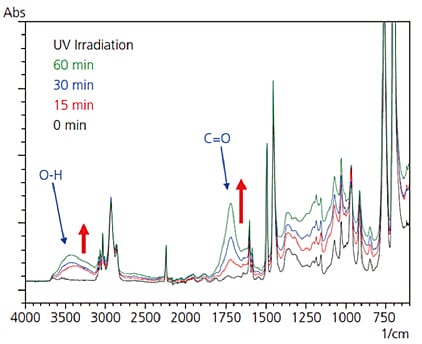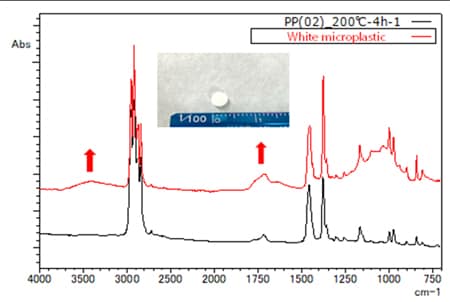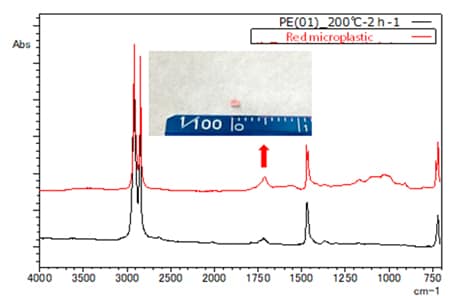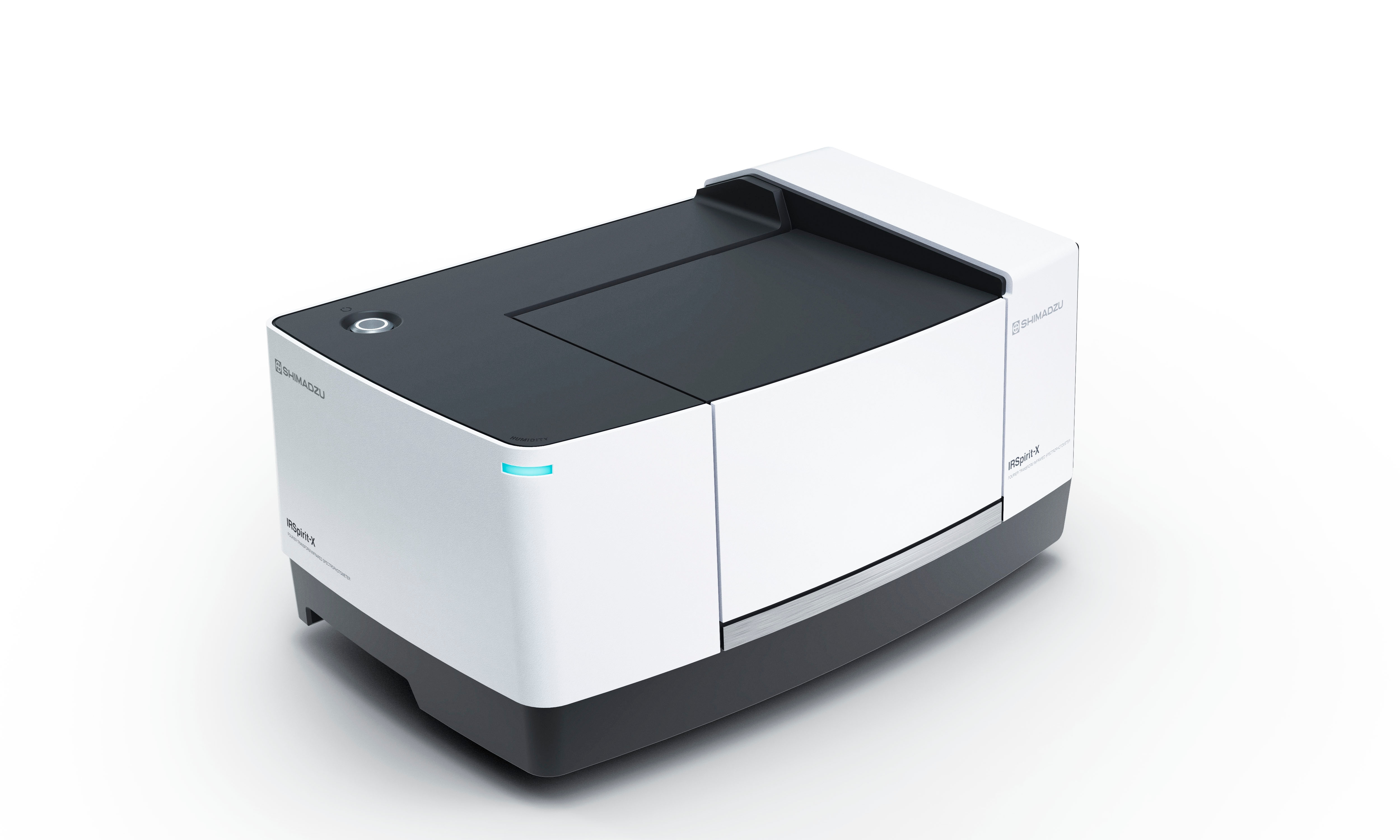MPs Analysis Using Thermal Damaged Plastics Library
The Fourier transform infrared spectrophotometer (FTIR), which excels in qualitative analysis of organic compounds, is particularly suitable for analysis of microplastics. An infrared microscope is effective when analyzing microscopic samples with sizes of 100 μm or less.
Thermal-Damaged Plastics Library
The Shimadzu thermal-damaged plastics library is a library containing spectral data for 13 types of plastic in the unheated condition and when heated to various temperatures from 200 °C to 400 °C.
Degradation of plastics begins from the formation of carboncentered radicals as a result of dissociation of hydrogen from carbon-hydrogen bonds caused by the energy of heat or light. When oxygen reacts with the radicals, formation of additional radicals and dissociation of hydrogen occur in a kind of chain reaction, and inert substances are also formed by bonding between pairs of radicals. Plastics are degraded by this process, which is accompanied by molecule scission and crosslinking. Since the changes that occur in the infrared spectrum are often similar, the thermal-damaged plastics library can also be used in qualitative analysis of ultraviolet-degraded microplastics in many cases.
Fig. 1 shows the infrared spectra of acrylonitrile butadiene styrene (ABS) resin when irradiated with ultraviolet light, and Fig. 2 shows the infrared spectra of ABS resin when subjected to heating.
In the case of ABS, peaks associated with stretching vibration of the OH radical and C=O radical appear under both ultraviolet and thermal conditions, showing that oxidative degradation occurs due to exposure to ultraviolet radiation and heat.

Fig. 1 Infrared Spectra of ABS Resin (Ultraviolet Irradiation)

Fig. 2 Infrared Spectra of ABS Resin (Heating)
Fig. 3 and Fig. 4 show images of the samples and the measurement results for two samples. From the results in Fig. 3, a hit for polypropylene (PP) heated at 200 °C for 4 h was obtained from the thermal-damaged plastics library for the white microplastic, and from Fig. 4, a hit for polyethylene (PE) heated at 200 °C for 2 h was obtained for the red microplastic. It can be inferred that both microplastics were degraded by oxidative degradation caused by ultraviolet radiation.

Fig. 3 Measurement Result and Library Search Result for
White Microplastic

Fig. 4 Measurement Result and Library Search Result for
Red Microplastic
![]()

FTIR (Fourier Transform Infrared Spectrophotometer)
Despite their small footprint, smaller than an A3 size sheet of paper, these models have been engineered with a wide sample compartment that accommodates existing accessories from Shimadzu and other manufacturers. This capability makes them the smallest (installation footprint) and lightest FTIR spectrophotometers in the world that can be used with optional products from other manufacturers. They also include a program, IR Pilot, with 23 application-specific workflows that can be utilized without involving any complicated parameter setup process. Customers can select from either the IRSpirit-TX model, which offers sensitivity equivalent to standard Shimadzu models, or the reasonably priced IRSpirit-L model.


